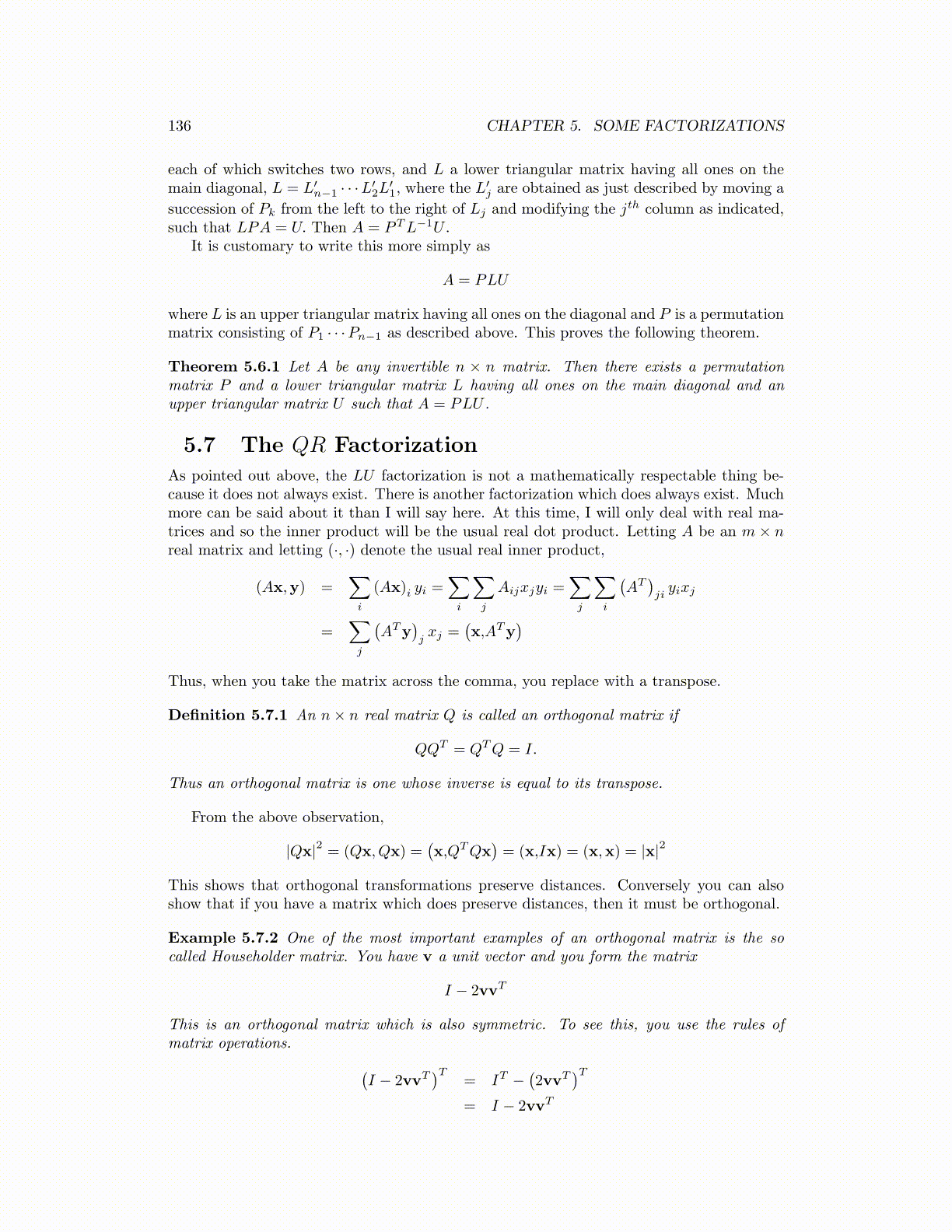
136 CHAPTER 5. SOME FACTORIZATIONS
each of which switches two rows, and L a lower triangular matrix having all ones on themain diagonal, L = L′
n−1 · · ·L′2L
′1, where the L
′j are obtained as just described by moving a
succession of Pk from the left to the right of Lj and modifying the jth column as indicated,such that LPA = U. Then A = PTL−1U .
It is customary to write this more simply as
A = PLU
where L is an upper triangular matrix having all ones on the diagonal and P is a permutationmatrix consisting of P1 · · ·Pn−1 as described above. This proves the following theorem.
Theorem 5.6.1 Let A be any invertible n × n matrix. Then there exists a permutationmatrix P and a lower triangular matrix L having all ones on the main diagonal and anupper triangular matrix U such that A = PLU .
5.7 The QR Factorization
As pointed out above, the LU factorization is not a mathematically respectable thing be-cause it does not always exist. There is another factorization which does always exist. Muchmore can be said about it than I will say here. At this time, I will only deal with real ma-trices and so the inner product will be the usual real dot product. Letting A be an m × nreal matrix and letting (·, ·) denote the usual real inner product,
(Ax,y) =∑i
(Ax)i yi =∑i
∑j
Aijxjyi =∑j
∑i
(AT)jiyixj
=∑j
(ATy
)jxj =
(x,ATy
)Thus, when you take the matrix across the comma, you replace with a transpose.
Definition 5.7.1 An n× n real matrix Q is called an orthogonal matrix if
QQT = QTQ = I.
Thus an orthogonal matrix is one whose inverse is equal to its transpose.
From the above observation,
|Qx|2 = (Qx, Qx) =(x,QTQx
)= (x,Ix) = (x,x) = |x|2
This shows that orthogonal transformations preserve distances. Conversely you can alsoshow that if you have a matrix which does preserve distances, then it must be orthogonal.
Example 5.7.2 One of the most important examples of an orthogonal matrix is the socalled Householder matrix. You have v a unit vector and you form the matrix
I − 2vvT
This is an orthogonal matrix which is also symmetric. To see this, you use the rules ofmatrix operations. (
I − 2vvT)T
= IT −(2vvT
)T= I − 2vvT